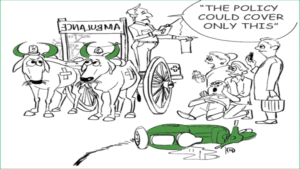-

Transfer of ownership and insurance when selling your used car
With newer car models being launched regularly, sticking with the same car for years is uncommon. Most of you use…
-

How to get tax claims on health care?
Every family incurs heavy medical expenses at some point. As a support for this financially draining experience, the government offers…
-

Understanding tax rebates for health insurance and medical treatments
Everyone and their family face a few situations when their medical costs are pretty high. In order to help the family…
-

Five commandments to choose the best car insurance plan
Car insurance is an essential component whether you are buying a new car or are renewing an expired insurance policy….
-

What’s personal accident cover?
Accidents are hard on families. It is not just about the pain and loss of the person. It upset their…
-

Importance of health insurance for women
She may be a homemaker or a breadwinner, but there is no scope for doubt that a household cannot function…
-

4 things to know before buying health insurance
You are the wise one, and you have made up your mind to get health insurance. Everyone tells you that…
-

When can your cashless claim get rejected and what next?
When you buy health insurance, most companies promise a cashless claim at the hospital. With a cashless claim, the insured…
-

Misselling in health insurance and how to avoid being a victim
Insurance understanding and knowledge is not easy. The fine print which accompanies any policy is tricky and it is tedious…


